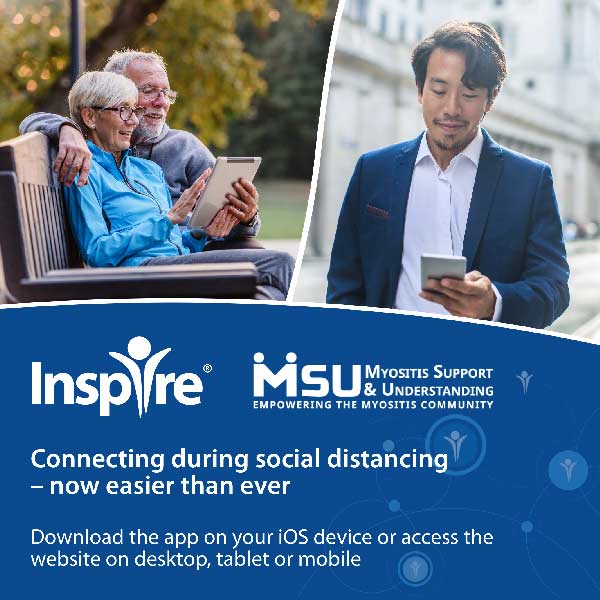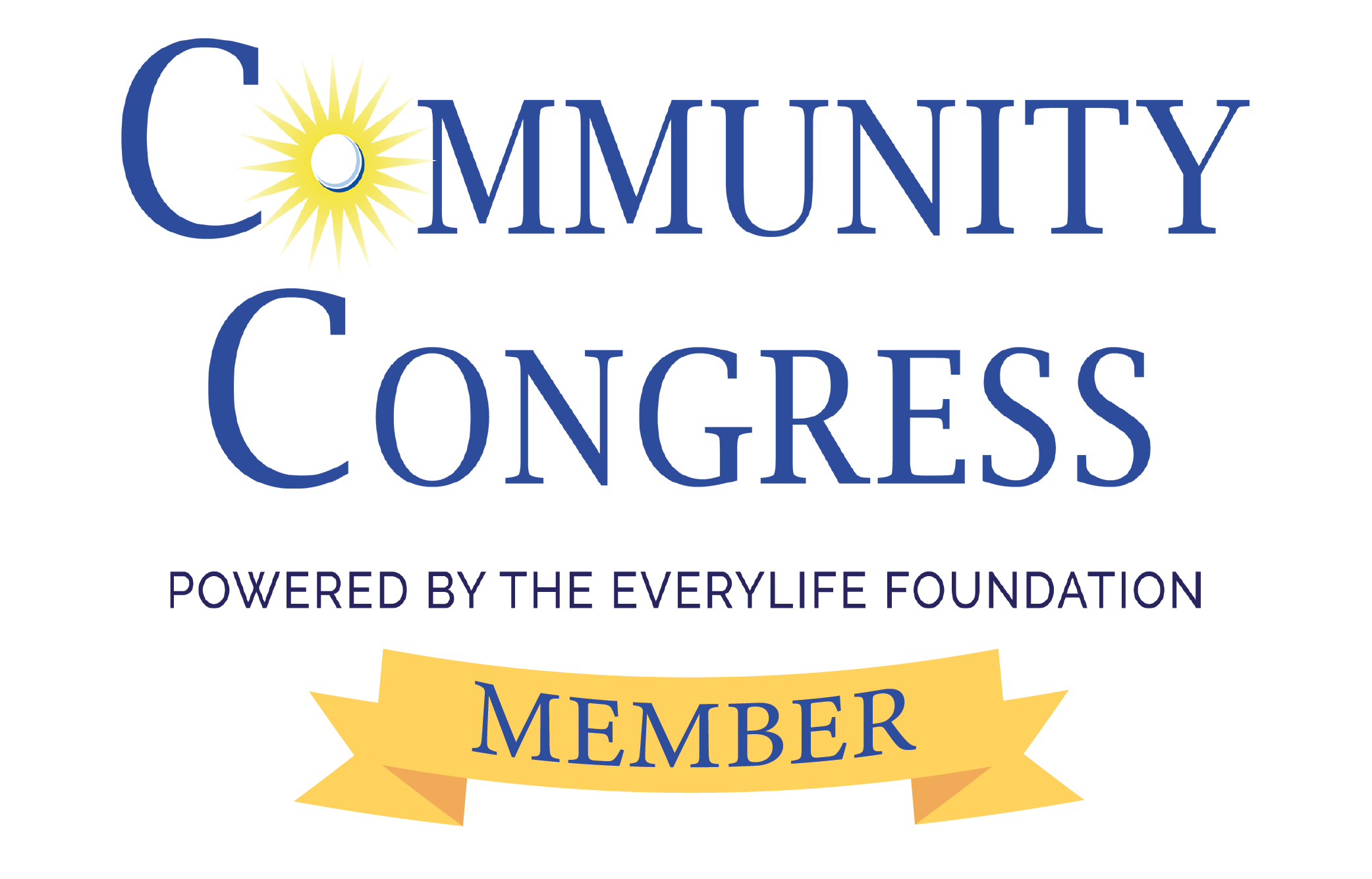Sandy Block shares her story, “Adventures with Polymyositis: My experiences and recommendations” for Myositis Awareness Month and MSU’s #MyositisLIFE project.
In March 2012, after several days of low-grade temperatures and muscle aches, I noticed heaviness in my legs, like my feet and calves were encased in cement. The temperature and aches disappeared within a couple of weeks, but the weakness progressed subtly over the next several months with a few embarrassing and painful trip and fall events and difficulty rising from the ground. At 63, I thought the weakness was age related until a vacation in Europe, where it became increasingly difficult to rise from a seat and climb stairs.
The London subway proved to be the most challenging when I tripped falling face-first, half in and half out when I discovered that, not only were legs weak, my arms were too weak to push up from the floor. It was both an embarrassing and frightening experience. Back in the US, the following week, I felt that I was producing too much saliva and began having difficulty swallowing, which was even more frightening.
I began making doctor appointments — primary care, ENT, gastroenterologist — none of whom could find anything wrong. Feeling certain that it was a neurological issue, I saw a neurologist I knew, who listened intently and immediately ran blood work, a nerve conduction study and an EMG. CKs were at 5,000, NCS was negative and EMG was inconclusive.
The doctor concluded that I had myopathy, ordered a muscle biopsy to determine if it was an inflammatory form or a dystrophy and referred me to a Muscular Dystrophy Clinic which is operated locally by the Duke University Neuromuscular Center.
Biopsy results narrowed down the possible diagnosis to a few muscle diseases but didn’t pinpoint a specific type. Blood tests indicated negative ANAs and Myositis Specific antibodies. The neuromuscular doctor prescribed 60mg Prednisone hoping to see if symptoms improved. I started taking Prednisone in February 2013, 5 months after my fall in London and 11 months after I first noticed weakness,
The impact of “Muscle Weakness” on my Life
Muscle weakness cause difficulty putting a plate on the bottom shelf of my kitchen cabinets, washing and styling my hair, brushing my teeth, wiping my bum, scratching my nose, getting in or out of a car, putting on deodorant, scooping ice cream, cutting pizza, using steps and swallowing almost anything. TMI? Maybe, but I’m certain that there are those reading this who can understand its impact from their own experiences.
My husband and I devised ways to make the house more accessible. When I left the house, I used a walker and carried a flotation cushion to be able to get up from a standard seat and a homemade toilet seat riser.
Diagnosis and a setback
Twenty weeks after starting Prednisone, my condition received an official diagnosis of Polymyositis because of increased muscle strength and a CK level which had decreased from 5,000+ to 800.
It was at that point when I started an every-other-day taper, however, 3 months later, at 55mg alternate days, I began to notice weakness again and CKs at 1,500 confirmed it. Insurance approval for IVIG was submitted, but after a couple of denials, progressing weakness, and CKs rising to 2,400, we agreed that it was in my best interest to go back to 60mg of Prednisone daily. Additionally, Imuran was added, however, due to an adverse reaction, Cellcept was prescribed.
Recovery comes at a price
The drug combination proved to be successful for regaining muscle strength and dropping CKs to normal range within about 4 months. Potential side effects had been explained in detail, and I weighed the risks vs. benefits and opted to accept the risks because the disease was progressing rapidly. These potentially dangerous medications were a chance to halt the progression and possibly regain what I had lost.
I did improve enormously, however I also developed steroid-induced diabetes, irregular heartbeat, high blood pressure, cataracts requiring surgeries, severe reflux requiring surgery, and Osteoporosis resulting in fractures in my spine and necessitating daily injections to attempt to rebuild new bone. I now have to lead a “cautious life,” according to my doctors, to avoid future fractures.
The immunosuppressant and the drug I take for Osteoporosis also come with a long list of serious side effects, but so far I haven’t had any adverse symptoms. These medications have enabled me to regain a part of my life that was lost, and I have no regrets about taking the known risks to achieve that.
How I live with Polymyositis
While my physical abilities and stamina have been compromised, altering or eliminating some activities, I have drawn on my skills, strengths and interests to learn about my health issues to become my own, knowledgeable health advocate. As a co-founder and active volunteer of Myositis Support and Understanding, I have applied my research and writing background to help others learn to live with Myositis.
My personal oasis is the screened-in porch, deck and a small pool, which we installed for my warm-water therapy. I have sewn dozens of colorful outdoor cushions, adorned the area with beautiful blooming plants and have recently been able to paint and repurpose several decorative pieces. When I’m in pain or lethargic, I use these areas to read or use my laptop and try to make the best of the circumstances despite a body that has sometimes betrayed me. Incorporating upbeat music and surrounding myself with bright colors also puts me in a happy place.
I am conscientious about what I eat, incorporating a lot of anti-inflammatory, organic, non-processed and non-GMO foods. I have eliminated diet drinks and sweeteners and no longer use chemicals for cleaning.
Whether my diet or lifestyle has played a part of my recovery, I don’t know, but I will not risk a possible recurrence by changing what I have found works for me.
Advice I want to pass along
There are so much I have learned and many pieces of advice I could pass on from my journey with Myositis.
#1: Educate yourself
Education is at the top of the list, which I think should come from a variety of reliable sources including — but not exclusively from –- physicians and support from other patients.
As a co-founder of and volunteer for Myositis Support and Understanding, I can assure you that we work extremely hard to provide a website with tons of easy-to-understand information and resources which is essential to understanding and living with the disease.
#2: Be the expert
- Myositis is a rare disease; just one of 7,000 rare diseases; which doesn’t include more common diseases such as cancers and heart diseases.
- Myositis is just one of 80 autoimmune diseases.
- Signs and symptoms vary from person to person.
- There is no easy way to diagnose Myositis.
- Overlap disorders can add confusion to the diagnostic process.
- There is no one specific treatment which works for each person.
- Only about 3,000 cases of Myositis are diagnosed annually in the U.S. So, unless you live in a major metropolitan area, it is not likely that your primary care physician, dermatologist, rheumatologist, internist or neurologist has ever diagnosed or treated another case of Myositis.
With this known, is it possible that we are expecting too much to assume that doctors are thoroughly acquainted with this disease? Should we expect doctors to understand exactly what it is like to live with the disease and the treatments? If you have Myositis, I think you owe it to yourself to be the expert.
#3: Actively participate
In the case of this rare and serious disease, ignorance is not bliss. Being an active participant in your own health will help you navigate the journey more successfully. Learn about antibodies, treatment side effects, alternative drug names, complications, possible misdiagnoses, overlaps, and your rights as a patient and as someone with a disability.
Learn about the meaning of the tests you undergo, the results they may yield and details of the actual procedure. As I said, I was remiss in doing so for my first EMG, and it freaked me out. I have since had another EMG, which was a piece of cake and yielded more conclusive results. The lesson learned was to prepare myself for each and every future test; to know what to expect and avoid surprises.
#4: Keep a journal
The reasons to keep a journal are many, and I cannot stress how important it is to be diligent in noting even seemingly insignificant things, including the weather and what you ate or drank. The document can be used as an important tool to take with you to medical appointments. It is an effective way to note treatment and dosage changes and compare them to how you feel or how your body reacts.
Sometimes changes are so subtle, we don’t even notice. A journal can also be a valuable benchmark for you progress. When I doubted that I was making progress, I would refer to notes made earlier in the disease process and discover that I actually had progressed. I’ve noted the day that I was able to point and the day I was able to get out of a kitchen chair without a cushion. Conversely, it was my journal that confirmed that I was in a flare when I was tapering the first time.
#5: Look out for YOU
I am very grateful for the pro-active neurologist who listened to me as well as the neuromuscular doctors and physical therapy team at Duke. I know I am fortunate to be in an area with excellent medical care, but I insist that we act as a team. They can count on me to ask a lot of questions and offer suggestions. I typically come to my appointments armed with my journal and at least one piece of Myositis-related information to pass on to help them in their knowledge, which hopefully will help future Myositis patients.
I have had the opportunity to talk to medical students, which validates that my doctors respect me as a patient. However, If I didn’t have a good medical team locally or had not progressed as well as I have, I would figure out a way to travel to Johns Hopkins. I encourage those who feel they need better care to seek out physicians who are more experienced and are willing to participate with you as a team member.
A better me
As of May 2016, 4 years after the first noticeable signs of the disease, I am down to 12.5mg of Prednisone every other day and a daily dose of 2,000mg of Cellcept. I continue to gain strength, with almost normal strength in the muscles impacted by PM, surprising both me and the doctors.
I have lost all but 5 pounds of the 30 gained. The high blood pressure, irregular heartbeat and Diabetes are now a thing of the past as are the medications taken for those conditions. My cheeks have also deflated and stamina and energy have increased enormously. I still have a tendency to overdo, but the necessary rest periods are shorter in duration before I recharge.
Having Myositis has given me new perspectives. I don’t demand as much of myself as I did before getting the disease. I am better able to find greatness and gratitude in small things and have become more understanding about others’ struggles. And, while I was already aware that I chose the right person to marry, the past 4 years have really reinforced that, and I know that Andy’s patience and assistance and helped me cope with the disease.
Now, returning or even passing places I went while my disease was active provide great opportunities to reflect on how far I have come and are continued cause for gratitude. Even though I have some limitations, especially from the fractures, I still have vivid memories of how disabling the disease was and I recognize and celebrate my strength and stamina.











I’ve recenty been diagnosed with Polymyositis after contracting Covid 19 and your post has gave me a lot of hope, thank you!
Thanks for the hope Sandy. I was diagnosed with PM at 44 and after a year and a bit on prednisilone and methotrexate, I am struggling to see any improvements in my thigh strength despite doing physio for 6 months now. But if you can do it, maybe I can too!
Sandy,
Thanks for sharing your great story.
Such great tips! Thank you.